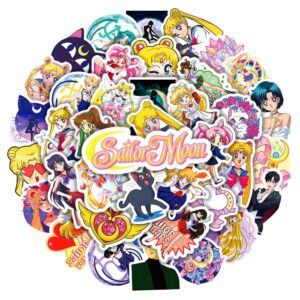Michael Morhaime, former CEO of Blizzard, only recently stepped down from presidency. Despite that, his absence has already left a hole in the video game industry. So in commemoration, we wanted to chronicle a complete tale of his life.
In this article, we’ll cover Morhaime’s rise to power after Silicon and Synapse changed their name to Blizzard Entertainment. If you haven’t already, be sure to go read the first part of this series, which covers Mike’s early years and the beginnings of Silicon and Synapse (Blizzard’s first name). It’s a great read with a lot of historical info – go check it out!
For now, this is part 2 of the Michael Morhaime chronicles:


![]()
![]() The early crew at Silicon and Synapse | Source: GamesBeat
The early crew at Silicon and Synapse | Source: GamesBeat
Rolling with the Times
When we last left the Blizzard crew (formerly Silicon and Synapse), there was somewhat of a shadow hanging over the company. They were low on funds, constantly on the verge of bankruptcy, and increasingly lower on morale. Michael Morhaime recounts that it was “pretty tight for the first few years.” But then, like a chorus of angels, Davidson and Associates swooped in with a 7-million-dollar acquisition and saved Silicon (now Blizzard) from near-extinction. Suddenly, co-founders Mike Morhaime and Allen Adham were swimming in funds. They could finally afford to take in new talent, and to create their own IP’s. Speaking of which…


The War Begins…
Allen, Mike, and the rest of the Blizzard employees were influenced by Dune II, an early real-time strategy game (RTS) title by Westwood Studios. Mike recounted “At the time, a lot of us really liked Dune II.” “We got really enamored of realtime strategy. Dune II was just a single-player game, but we realized that a game like that where you could play against another person would be so cool, so much fun.” Inspired by the new game that was taking the office by storm, some of the artists at Blizzard, including lead artist Sam Didier, assembled some concept art for their own RTS game. And from this concept art eventually sprang Warcraft: Orcs and Humans, what many consider to be the first influential real-time-strategy game.
Warcraft did so many things right. For example, it was the first RTS to allow multi-unit selections. Lead developer Patrick Wyatt said about this feature “it was obvious that enabling players to select more than one unit would speed task-force deployment and dramatically improve game combat.” Aside from gameplay, Warcraft had the rich lore, story, and cinematics that Blizzard would eventually be well-known for. The war between orcs and humans provided a compelling incentive for the player to push through the campaign, a trait that small-scale RTS’s before it didn’t possess. It also was one of the very first, if not the first multiplayer RTS, an important feature that most RTS’s would go on to be known for, thanks to Blizzard.
Unprecedented Success
Warcraft hit moderate success levels, but it was the sequel, Warcraft II: Tides of Darkness, where Blizzard knocked the ball out of the park for the very first time. In Michael’s words, “I think that Warcraft 2 was sort of turning everything up a notch. It was more players, higher resolution, there were land, sea, and air [units]. We had been working on Warcraft [Orcs and Human] for a year, so the team already knew what it was doing.”
Between Warcraft 1 and 2, Blizzard had single-handedly launched the RTS genre as a staple of the PC gaming market, and healthy competition from Westwood Studios’ Command and Conquer only solidified the genre. By the end of its life, Warcraft 2 won out as the predominant RTS by selling more than 2 million copies. There was no question – Blizzard was one of the “big boys” now.


Crunch Time
As time went on, the folks under Michael and Allen proved themselves as incredibly hard workers. Another game was coming up, and the crew would waste absolutely no time in getting it out the door.
Originally, StarCraft was going to be nothing more than an artistically-redesigned version of Warcraft II, but after a mediocre reception at the 1996 CES, Mike and crew wanted to make something just a bit more impressive. In the words of lead programmer Frank Pearce, “At the time, we were very proud of it, but by the time the end of the show rolled around, I think we were a little bit embarrassed.” So after a year in development, they completely scrapped the game. They retooled the game engine, artwork, and mechanics into something entirely new – but it was no simple process.
All 50 workers at Blizzard worked seven days a week to push StarCraft out as quickly as possible. But it wasn’t quick at all. Mike, of course, remembers this period vividly: “For the team, the crunch lasted about eight months.” Morhaime himself might have been the busiest of the bunch. He not only co-owned the company, but did quite a bit of programming and producing as well. It was an intense process for everyone involved, but after the eight-month development hell, the results were astronomical.
If Warcraft II was Citizen Kane, StarCraft was The Godfather. Through pure determination and long hours, Blizzard had crafted an RTS so intricate in its systems, balance, and competition that it sparked a revolution. Without StarCraft, there would be no eSports. Korea especially fell head over heels for this game – in 2005, the Korean StarCraft championship gathered more than 120,000 people into a single stadium.
StarCraft proved that Blizzard’s main division wasn’t a one-hit wonder, or a two-hit wonder. They were a three-hit wonder now, and this time, they had completely ripped the door off the hinges. StarCraft sold more than 11 million copies. If Blizzard was swimming in funds before, it was drowning in funds now.


Continuing the Tradition
Over the years, it became increasingly apparent that Blizzard had an extremely high standard for quality. Adham and Morhaime ensured that every single game they produced would be shined to perfection before they even thought of kicking it out the door. World of Warcraft, of course, continued this tradition.
For WoW, Adham, Morhaime, and crew wanted to create an MMO for beginners. They absolutely succeeded. Standing on the backs of Ultima Online and Everquest, WoW proved to be much more forgiving of death than the former two were. Not only that, but WoW was one of the most expansive and beautiful worlds created in a video game up to that point. With more than a dozen areas on the land of Azeroth to explore, and hundreds of quests and missions to complete, WoW’s engrossing world became infamously addictive. Eventually, WoW’s subscription service gathered 12 million concurrent players – multiply 12 million times 20 dollars per month, and you get a lot of money for Blizzard’s coffers.

 The prodigal son himself | Source: Business Insider
The prodigal son himself | Source: Business Insider
A Dear Friend Departs
In 2003, Allen Adham left the company for what seemed like for good. He would later call it “the biggest mistake I made in my life.” While Allen went off to create a hedge fund for near a decade, Michael stepped up from co-owner to full-on CEO OF Blizzard. It was a monumental achievement. Morhaime was now the leader of one of the most powerful forces in video games. He’d come quite some ways since Silicon and Synapse – but there was still a way to go.


The Legacy Holds
Over the next decade, Morhaime’s supervision didn’t lower Blizzard’s standard of greatness one iota. 2010’s StarCraft II, while not quite as influential as the first game, still has an active community and subreddit to this day. Expansion after expansion after expansion continued to come to World of Warcraft. They ventured into the card game realm with Hearthstone, a fantastic balance between strategy and luck. They updated the masterpiece Diablo II from Blizzard North with Diablo III. Heroes of The Storm brought a fresh, Warcraft-y take on the MOBA genre. And of course, there’s Overwatch, one of the most critically acclaimed and highest-selling first-person shooters in years.

 Mike and Allen have sure been through a lot together | Source: Business Insider
Mike and Allen have sure been through a lot together | Source: Business Insider
In late 2016, Allen Adham returned to Blizzard after more than decade. Mike was more than willing to bring him back with open arms: “It was all about Allen convincing me that we should take him back. It was a pretty easy conversation.” Allen came back to a job that he considers “the best job at Blizzard.” While he doesn’t get his hands dirty with programming or nitty-gritty technical work, Adham oversees all of Blizzard’s projects as a whole. He’s made quite the comeback – and it’s heartwarming to see two old friends reunite after ten years.

 The new CEO of Blizzard, J. Allen Brack | Source: Blizzard
The new CEO of Blizzard, J. Allen Brack | Source: Blizzard
Going Mike-less
A week ago, on October 3rd, Morhaime announced that he would be stepping down as CEO of Blizzard. In his place will be former lead producer of World of Warcraft J. Allen Brack. For more information on Mike’s departure, you can check out our news article right here.

 A role model
A role model
Michael Morhaime is a role model of perseverance and triumph. Ever since he co-founded Silicon and Synapse way back in the early nineties, he’s worked tirelessly to promote it, even when all seemed grim. When he was cashing in visas at the local food market for living money, he pressed on. When he was living off nothing but $5,000 from his grandma, he pressed on. And eventually, after more than three years, his diligence and passion paid off, and the rest is history.
Imagine where the gaming industry would be without this incredible persistence. Imagine if we didn’t have talented, relentless creators like Frank Pearce, Allen Adham, and Michael Morhaime to lead the way. Where would we be without this determination?
Michael Morhaime states his own motivation the best:
“[Starting the company], there was this attitude that it didn’t matter what our project was. We were going to learn how to do it, and we could learn anything that we set out minds to. We just wanted to make great games. It was really as simple as that.”












